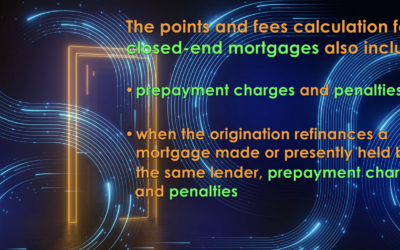Learn the ten prohibited lender actions which protect the borrower after origination of a high-cost (Section 32) consumer-purpose mortgage.
California Mortgage Lending
Learn the core concepts of consumer and business mortgage lending and brokering.
Stay current on the latest news, videos, forms, and updates for California Mortgage Lending.

Recent updates to the course e-book
- Chapter 3: The Agency Law Disclosure. The updated statutory Agency Law Disclosure and confirmation provision went into effect the beginning of 2019. Both the content of the form and when it is to be used have been modified. Further, prior printings indicate the Agency Law Disclosure is not required on a lease with a term exceeding one year. However, lease transactions greater than one year are targeted transactions requiring the disclosure. For a thorough analysis of the new disclosure and confirmation practices, see the digital eBook version of the book.
- Chapter 72: Home mortgage interest deductions. The definition for principal residence on page 472 is partially obscured. It should read “The residential property where the homeowner resides a majority of the year.”
- Quiz 3 Question 3 has been simplified to read:
California anti-discrimination law is enforced by:
a. the Department of Business Oversight (DBO).
b. the Department of Fair Employment and Housing.
c. the Department of Housing and Urban Development (HUD).
d. Fannie Mae.
06/25: The 2025 rules for buyer representation and fee-splitting avoidance are currently being edited into this e-book.
Newly published related content
Section 32 homeowner protections limiting mortgage note provisions
Several repayment provisions in the note documenting a Section 32 mortgage origination are restricted in their scope — or outright prohibited.
The points and fees test for Section 32
Learn when a consumer-purpose mortgage falls under Section 32 limitations and disclosure rules.
Form-of-the-Week: Further Encumbrance Consent, and Note Enforcement Provisions — Forms 410 and 418-5
These forms are used by a prospective junior lender or carryback seller when the real estate is encumbered by an existing first mortgage containing a due-on clause, to obtain consent from the lender holding the mortgage to further encumber the property with a second mortgage, and by a loan broker or escrow officer when originating a mortgage with the lender or carryback seller, to include a guarantee, exculpatory or governing law provision in the promissory note.
The APR Coverage Test: Part 2
Part 2 of this video series provides examples for how MLOs can determine whether a transaction is subject to Section 32 compliance.
Form-of-the-Week: Deed of Trust & Assignment of Rents, and All-Inclusive Trust Deed Addendums — Forms 450, 442 and 443
An agent or escrow officer uses these forms when a seller of property carries back an all-inclusive note and trust deed (AITD) evidencing a principal debt which includes the balance owed on an existing mortgage and a payoff demand.
Mortgage Concepts: Timelines for lender RESPA disclosures
This video covers delivery of the Loan Estimate and Closing Disclosure.
May a second trust deed note holder on a call of a recourse note now unsecured due to foreclosure by the senior note holder, judicially collect the payment due on the call when monthly note payments are more than four years delinquent?
Piedmont Capital Management, LLC. v. McElfish
Form-of-the-Week: Agreement to Modify a Promissory Note, and Modification of the Promissory Note — Forms 426 and 425
These forms are used by a holder of a mortgage, their servicing agent or broker when arranging the modification of the mortgage note, to set forth the terms sought in the modification effort, to evidence the modification of the original note and state the change in terms of the note.









